Discover the rich history of the Murdick family and their iconic fudge shop on Mackinac Island, from its 1887 beginnings to its lasting impact on Michigan tourism and confectionery traditions.
Photo: Photo of the shop in the 1960s (photo from Facebook via Bentley Historical Library)
In the latter half of the 19th-century, domestic tourism was quickly gaining steam throughout the United States. So much so, that places like Mackinac Island required entirely new, and expansive, infrastructure to accommodate this influx of visitors. As such, the Grand Hotel was constructed in 1887– in just 93 days; when finished, its extensive grounds included dining facilities, meeting spaces, and 286 uniquely decorated guestrooms. Aside from the pre-existing military infrastructure, trading posts, and a limited number of shops, Mackinac Island’s status as a National Park was the main draw for national tourism. Its beauty, clean air, and serenity were extremely appealing for city folks, who were caught in the midst of rampant industrialization.
Alongside the growth of the hospitality industry, there existed an increased opportunity for business ventures. More visitors to the island meant more disposable income which, ultimately, encouraged the creation of some iconic Mackinac Island industries, namely fudge.
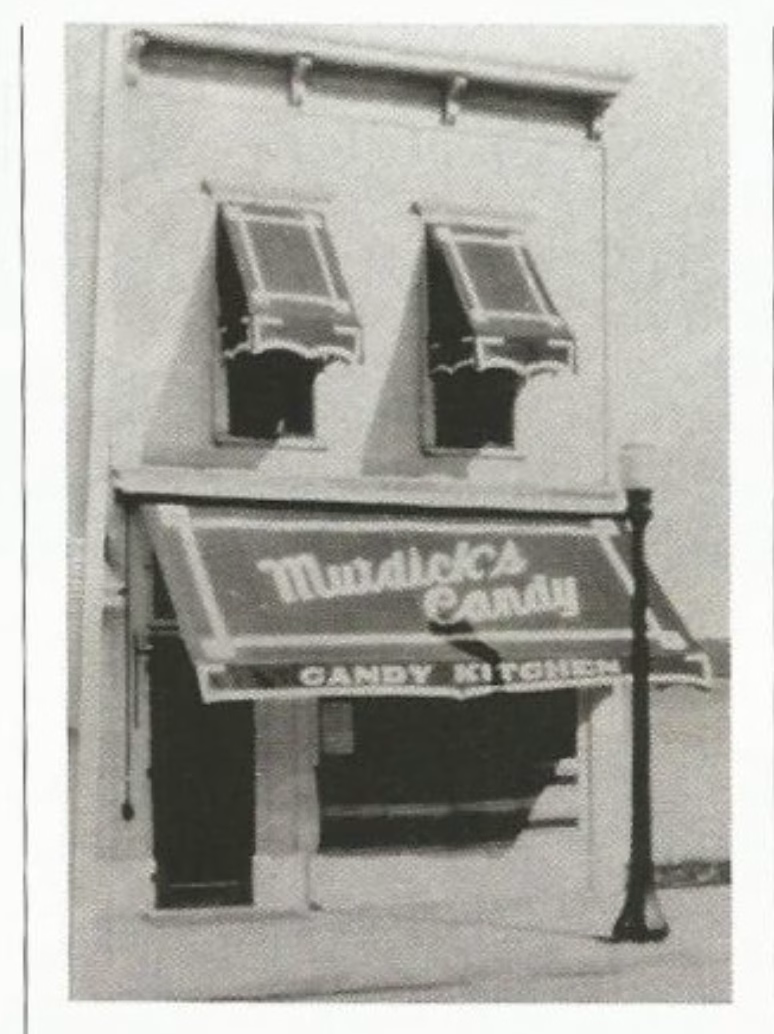
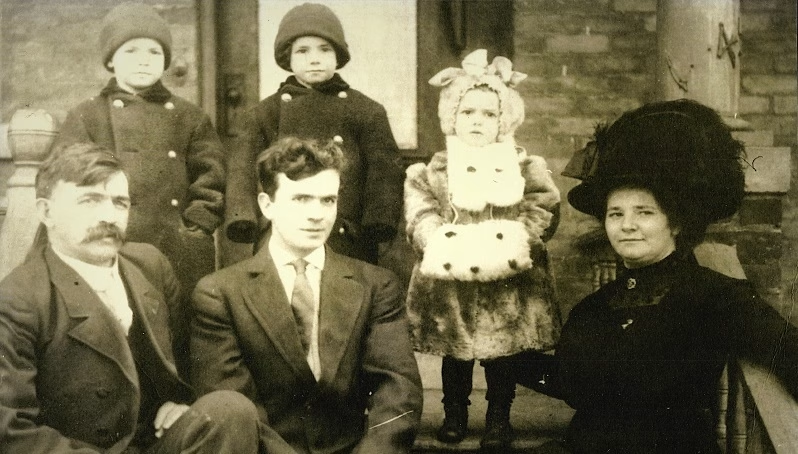
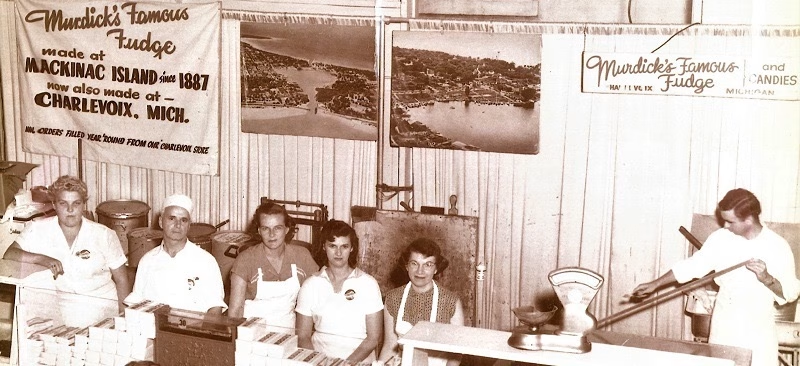
In 1887, the first candy shop opened on Mackinac Island, the same year that the Grand Hotel opened for operations, and remains open today. The Murdick family, consisting of husband and wife, Henry and Sara, and their son Jerome “Rome”, arrived on Mackinac in 1887 after being commissioned to create canvas awnings for the Grand Hotel. Sara wasted little time letting her exquisite confectionary skills sit idle. Rather, in the same year, the Murdick’s opened Mackinac Island’s first candy shop, called Murdick’s Candy Kitchen, which sold a combination of candies, sweet treats, and of course, fudge.
The Murdick’s cannot be credited with the invention of fudge, but can be thanked for ushering the sweet treat into national recognition and enjoyment. It is important to note that their legacy extends further than fudge’s popularity; the Murdick family actually pioneered the marble slab technique of fudge-making, which all of the shops on Mackinac Island continue to practice today. The marble table gave the fudge a unique texture, and also acted as a stage on which visitors could observe the fudge-making process.
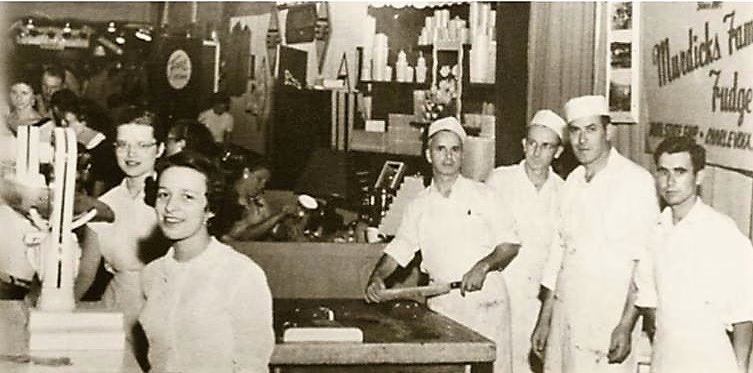
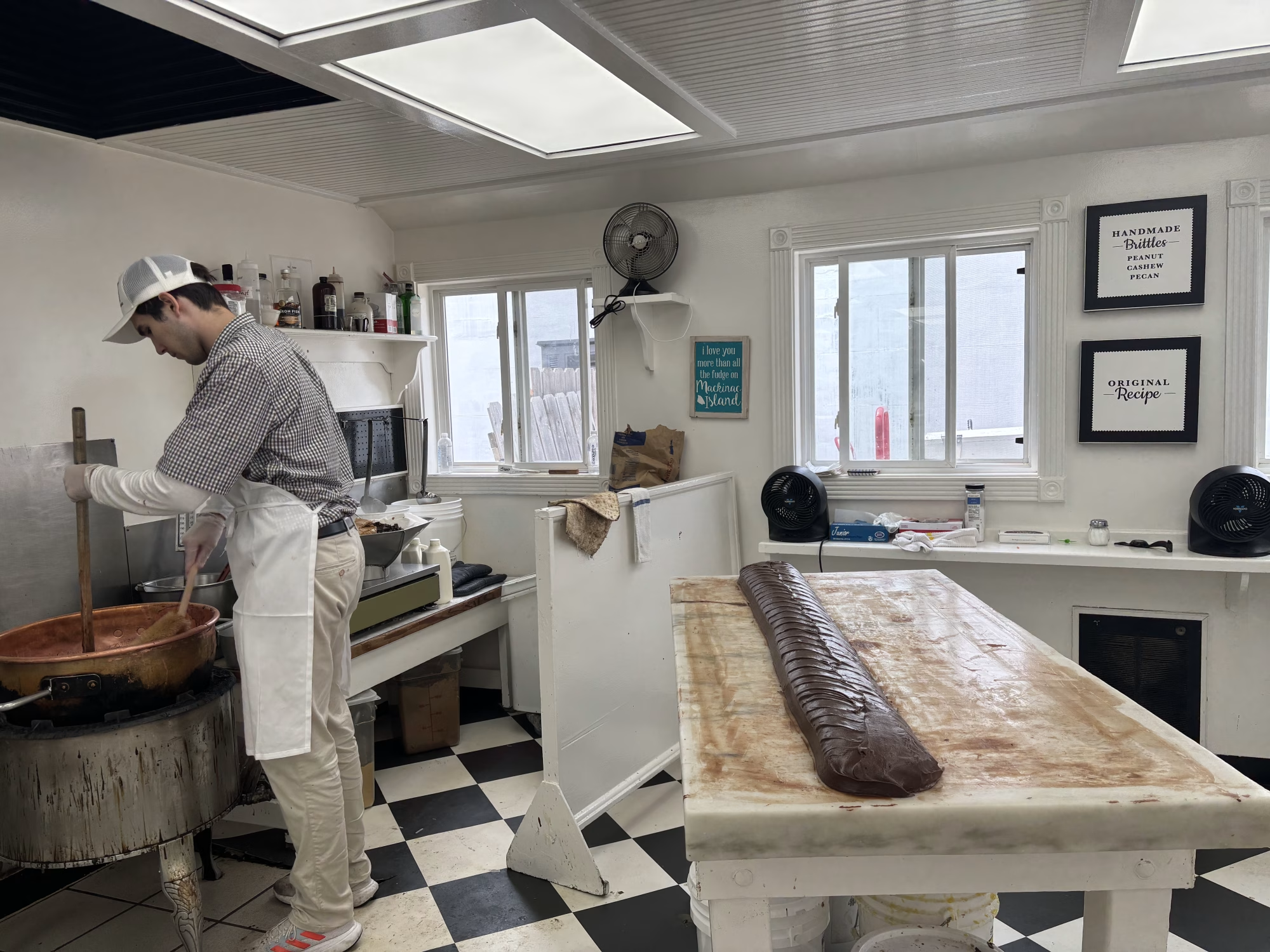
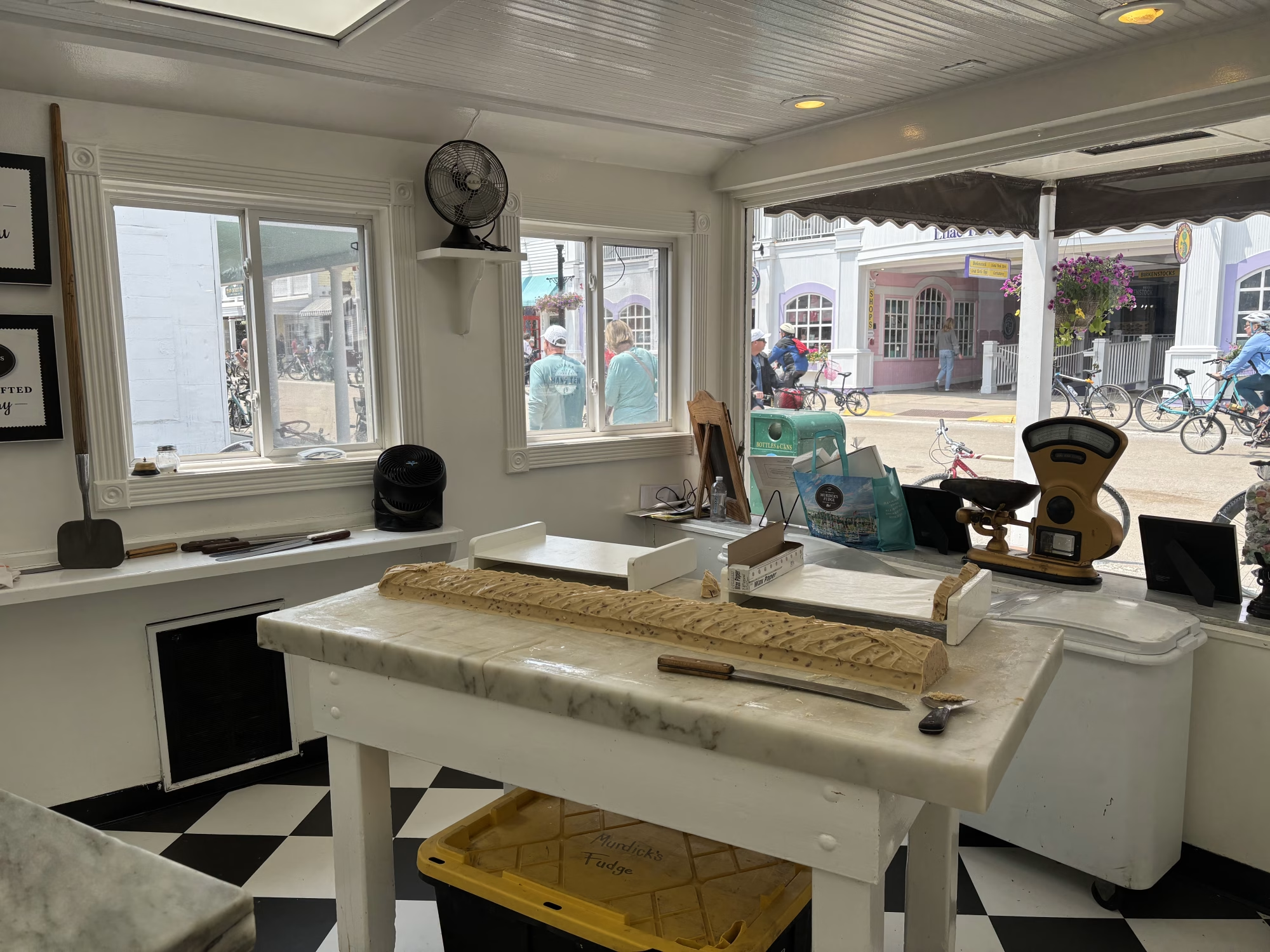
Another important Murdick contribution to the fudge industry manifested in the midst of World War I; as sugar rationing became commonplace, fudge businesses on Mackinac Island significantly declined. In 1920, in an effort to revitalize the performance that accompanied the fudge making, the Murdick’s implemented music and large ceiling fans to waft the scent of fudge onto the street. Phil Porter, author of “Fudge: Mackinac’s Sweet Souvenir”, wrote, “Gould [Rome Murdick’s half-brother] even went so far as to pour vanilla flavoring into a bubbling cauldron of candy. The vanilla instantly dissolved, adding no flavor, but created a sweet-smelling aroma that wafted into the street to lure unsuspecting passers-by.” Alongside the increased popularity, as well as the temperate climate conditions of Mackinac Island, many families followed in the Murdick’s footsteps, opening their own candy and fudge businesses. This boom was short-lived though, as the arrival of the Great Depression in 1929 prompted every shop to close, except Murdick’s Candy Kitchen.
Post-depression business was just as challenging as in its midst– on some days, Gould would only sell one pound of fudge. Considering one batch yields nearly 60-63 half-pound slices of fudge, this would not sustain the Murdick candy business. As a result, Gould opted to sell the shop in 1940 to Harold May. After signing a non-compete clause, the Murdick family would have to wait ten years to rejoin the Mackinac Island fudge industry. In 1957, Jerome Murdick opened Murdick’s Luncheonette on the island. As soon as the non-compete clause expired, Jerome began to sell fudge once again at the Luncheonette, and eventually converted it back to its former glory: Murdick’s Candy Kitchen.
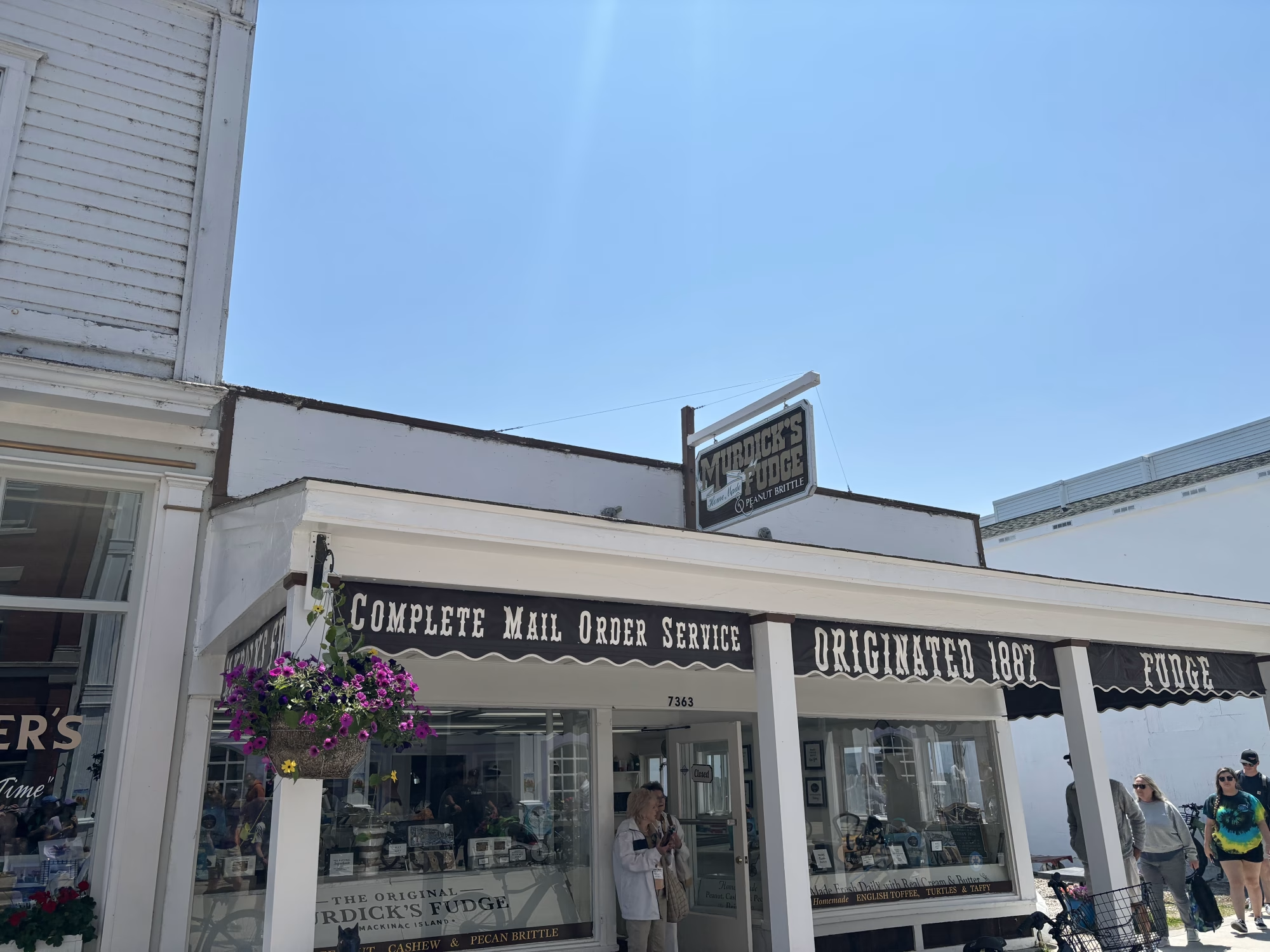
Today, Murdick’s still uses Sara’s original fudge recipes, as well as Jerome and Gould’s marble slab and fan techniques. There are an additional 12 fudge shops on the island that practice similar production processes, but none with the legacy of Murdick’s. The significance of fudge on Mackinac Island is largely related to the birth of domestic tourism, the celebration of historic traditions, and the perseverance of early entrepreneurs. The sweet treat has been a mainstay of Mackinac Island for nearly 150-years, and has largely become synonymous with Northern Michigan, and especially with Mackinac Island.
As one of the top summer travel destinations in the US, there is no shortage of fudgies– a term coined in the 1960s to describe island tourists– for what may seem like too many fudge shops within its 8-mile circumference. In the end, the celebration of fudge on Mackinac Island serves as a delightful reminder of the sweet indulgences that vacations offer, while also honoring the rich history that made these visits possible– not to mention, alongside the island’s vibrant seasonal blooms, the aroma of freshly made fudge aids in masking the natural scents of the car-free island (graciously provided by the horses, of course).
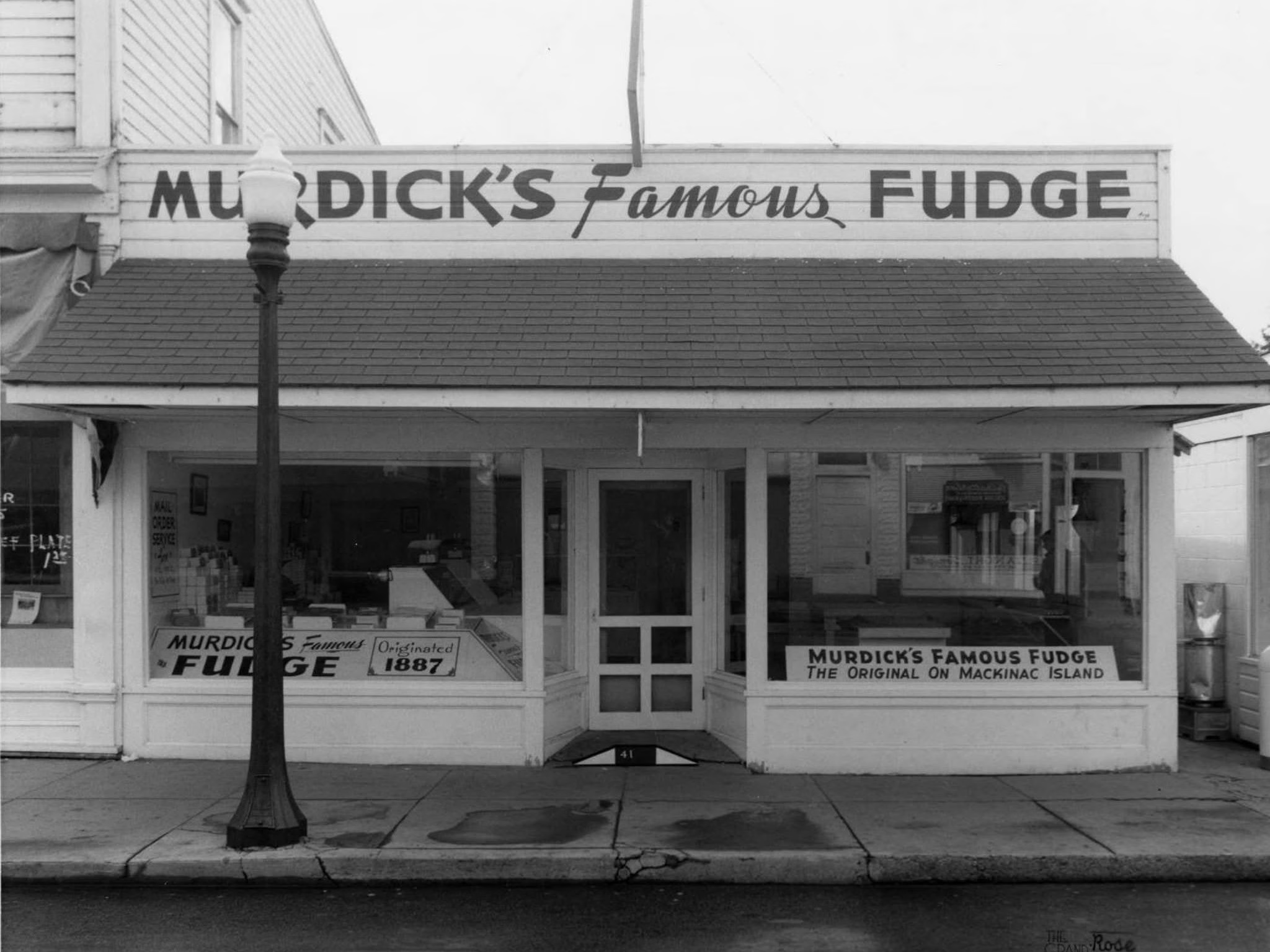




 8123 Main St Suite 200 Dexter, MI 48130
8123 Main St Suite 200 Dexter, MI 48130


